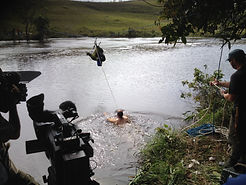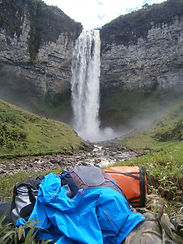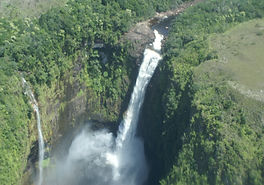
Martin Pailthorpe

Safety is a subject important enoough to deserve a page of its own. Coming in to a project at the last minute doesn't mean taking any shortcuts, and safety is no exception.
Over the years I have compiled dozens of risk assesments, so I have a comprehensive understanding of what production managers and insurers need to see before signing off on a shoot.
Working on programmes such as 999, Ray Mears Extreme Survival, Everest - Beyond the Limit, Dive Mysteries, Perfect Predators and Lost Worlds, I have liaised with specialists in areas such as climbing, rope access, visual effects (including stunts and explosions), caving and diving.
I understand managing risk on location - on two shoots potentially fraught with predictable wildlife and environmental threats (Lost Worlds, and Africa 2013 - Countdown to the Rains) is was the unpredictable (deadfall from trees) that nearly claimed casualties.
Working on location also means being able to dynamically assess risks, and know when and how to relay details of changed plans or unexpected circumstances to the office.
Working on Lost Worlds - an extreme climbing and wildlife series for Electric Sky/Discovery/Sky 3d for which I had only been able to do a recce from a Cessna at a height of 500 feet - I had to do several dynamic risk assesments to deal with once benign rivers that had to be crossed in flood, and a team splitting over 2 locations 2 hours walk apart, with no line-of-sight radio comms between them and only one medic - see below for solutions!
Case Histories - Safety



In the case of the river crossing, the location was around 5km from our main camp, just upstream of a 250 foot waterfall we were planning to film our presenters abseiling down. I had sent our fixer to recce the location, and he found that the best platform to abseil from was on the far bank of the river. At the time he carried out the recce, the river was running low, and he was able to ford it in calf deep water. I relayed this information back to the office. However, by the time we needed to get the crew across, a heavy storm had caused the river to flood. Together with our specialist rope access team and ex-military safety co-ordinator/medic, we were able to have a rope taken across the river by our strongest swimmer, and fixed to provide a tyrolean traverse for the rest of the team. This was all detailed in a dynamic risk assesment made on a timecoded piece to camera.
Similarly, while trying to climb another waterfall, we found that our pre-built base at the top of the falls was utterly impractical (the distance was only about 1km as the crow flies , but it involved a looping route 2 hour down and 3 hour back trip, a descent/ascent of around 600 feet, and a river crossing), and the climbing team needed to be based at the foot of the falls. Because there was no line of sight between the bottom camp and the top one we had no radio comms.
Key to the dynamic risk asesment was having our one medic in the right place at all times - during the day he was based at the foot of the falls, to cover the risk to the climbing team, and at night he returned to the top camp, on the basis that it would be easier to be at the top and respond to an emergency at the bottom (we had wilderness first aidqualified people on the team who could provide immediate first aid) than to be at the bottom and have to respond to an incident at the top.
The second issue was communications - the nearest point to our top camp where we could get a vhf signal was at the top of the falls, about 20 minutes walk away. We arranged to carry out check calls at first and last light, and at other times we had flares that could be used to alert the medic should he be needed, and a sat phone in each camp.